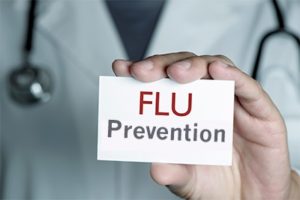Interventional Care


We notice that you are visiting us from . This site only services US-based visitors. Would you like to visit the site that is appropriate for your location?

Bonfires, pumpkin patches, and football are some of the fun activities that come to my mind when someone mentions the word, “fall”. And, while getting a flu shot is definitely not on the list of fun things to do, it definitely is one of the most important preventive measures we can take this time of year. According to the Centers for Disease and Prevention (CDC), while “seasonal influenza (flu) viruses can be detected year-round in the United States, flu viruses are most common during the fall and winter.”
So, what is the ‘flu’?
Influenza, or “the flu”, is caused by the Influenza virus. There are two strains that normally cause disease in humans: Influenza A and Influenza B, both spread through the air or by touching contaminated surfaces. Symptoms of the flu are fairly generic, but commonly include fever, runny nose, cough, muscle aches, headache and tiredness. Symptoms usually start about two days after exposure, and most people will recover from their illness in less than a week. There are antivirals, such as oseltamivir, that if taken within two days of symptom onset, can reduce the length of illness.
How can I help prevent it from spreading?
1) Vaccinate: According to the CDC, the Influenza vaccine is the best way you can protect yourself from the flu. It is recommended that anyone over the age of 6 months, who does not have any contraindications, receive the vaccine. This flu season, there are two types of vaccinations available – one that contains three strains of the Influenza virus (called Trivalent), and one that contains the above mentioned three strains, plus an extra Influenza B strain (called Quadrivalent)1
2) Respiratory, Environmental and Hand Hygiene: In addition to getting the flu shot, there are effective strategies to keep the flu from spreading.
Using the above strategies, in conjunction with receiving the vaccine, will help keep you and everyone around you as healthy (as possible), allowing you to enjoy the fall season to its fullest.
1. Center for Disease Control and Prevention:https://www.cdc.gov/flu/professionals/acip/index.htm
2. Cornell University Emergency Preparedness:http://emergencypreparedness.cce.cornell.edu/disease/Pages/DoItInYourSleeves.aspx
3. Center for Disease Control and Prevention: https://www.cdc.gov/flu/consumer/prevention.htm